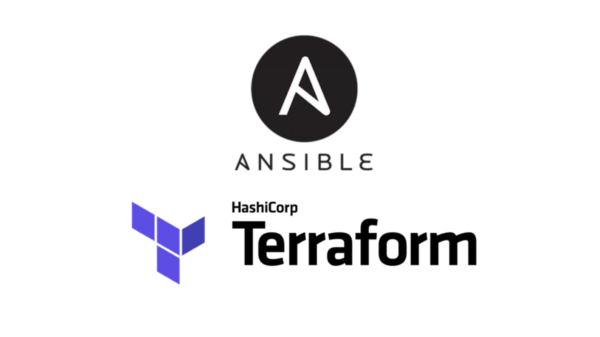 Terraform and Ansible are both open-source software tools that support the development of Infrastructure as Code (IaC). This facilitates the management and provisioning of infrastructure with software-based configuration control for physical and virtual services. IaC enables infrastructure to be defined using software modules. This enhances maintainability, promotes reusability, and allows near pain-free scalability. Both software tools use a functional approach, using declarative configuration to state the infrastructure’s desired final state. The system then executes the actions required to achieve this desired state.
Terraform and Ansible are both open-source software tools that support the development of Infrastructure as Code (IaC). This facilitates the management and provisioning of infrastructure with software-based configuration control for physical and virtual services. IaC enables infrastructure to be defined using software modules. This enhances maintainability, promotes reusability, and allows near pain-free scalability. Both software tools use a functional approach, using declarative configuration to state the infrastructure’s desired final state. The system then executes the actions required to achieve this desired state.
However, it is essential to recognize that although they perform similar functions, they were created with different purposes in mind and have both evolved such that they can both meet the challenges of implementing IaC functions.
Terraform Ansible comparison
Ansible is primarily a configuration management tool, while Terraform is primarily an orchestration tool. However, there is a blurred area of functionality between these two concepts, where both tools operate. The main difference between these two tools can be seen by considering orchestration and configuration management functions. As an orchestration tool, Terraform is focused on delivering the required end state by controlling the available resources to achieve the defined aims and produce the correct end state. Ansible, by contrast, manages the configuration of the available resources to maintain operations such that they comply with the requirements of the end state. These are subtly different approaches, but they produce the same end result, though will varying efficiencies.
Terraform uses a declarative language to implement its functionality while Ansible uses a procedural language. Declarative languages describe their desired results without explicitly listing what commands or steps are necessary to achieve those results. By contrast, a procedural language lists the computational steps and constructs the program using a modular structure to achieve the required results.
Terraform is adapted for supporting immutable infrastructure while Ansible is adapted for supporting mutable infrastructure. Terraform requires physical and virtual servers to be configured and deployed in a predefined state that it can then orchestrate to achieve the desired infrastructure configuration. Ansible, on the other hand, offers a more flexible approach where the configuration of deployed physical and virtual servers can be modified to achieve the desired state.
Terraform is cloud-agnostic and can be implemented on all of the major cloud providers, including Amazon Web Services, Google Cloud Platform, and Azure. The resource configuration definitions, written using the bespoke declarative language, are built from resource blocks, which will be tailored for each cloud provider. Switching to a new provider simply requires the replacement of the low-level resource blocks without changing the high-level resource configuration. Ansible is similarly cloud-agnostic; it employs a library of cloud support modules that are called as necessary to create instances for the infrastructure configuration definitions. This modular approach and the extensive library of modules allows Ansible to support public, private, and hybrid cloud infrastructure.
Ansible DevOps
Ansible supports DevOps by managing the DevOps infrastructure to provide a stable environment for both the development and operations functions to facilitate smooth orchestration. Ansible automation allows developers to include the infrastructure as part of the overall application thanks to the machine-processable definition files for configuration management. System administration becomes an integral part of the DevOps processes, which brings advantages in terms of maintainability, scalability, and cost controls to the business.
Terraform DevOps
Terraform supports DevOps by allowing infrastructure to be managed faster and more efficiently in support of the DevOps processes. Its advantage is its focus on infrastructure automation while being technology and provider agnostic. Used as part of a multi-team DevOps process, Terraform enables infrastructure support teams to work in parallel with developers improving business efficiency.
Making your choice
It is worth bearing in mind that Terraform vs. Ansible is not an exclusively mutual decision. If your complex infrastructure requirements support the decision, both these tools can be used together to deliver a complete IaC solution.
Terraform has the inbuilt capability to call Ansible. Terraform is optimized as an infrastructure provisioning tool but has limited configuration management control, which is Ansible’s strength. Terraform can be employed to stand up virtual machines or cloud instances and then make a call Ansible to complete the configuration of the infrastructure and its applications. Alternatively, with the release of Ansible 2.5, this includes a Terraform module that enables Ansible to call Terraform to set up the environment as part of the Ansible playbook.
However, if you do need to choose between Terraform and Ansible, this will come down to your specific requirements. Are you looking primarily for an orchestration function, or are you looking for a configuration management function? Is your infrastructure mutable or immutable? Terraform was explicitly designed as a provisioning tool for immutable infrastructure, while Ansible was intended expressly for configuration management. Both can correctly function when applied appropriately.
by Stephen M.